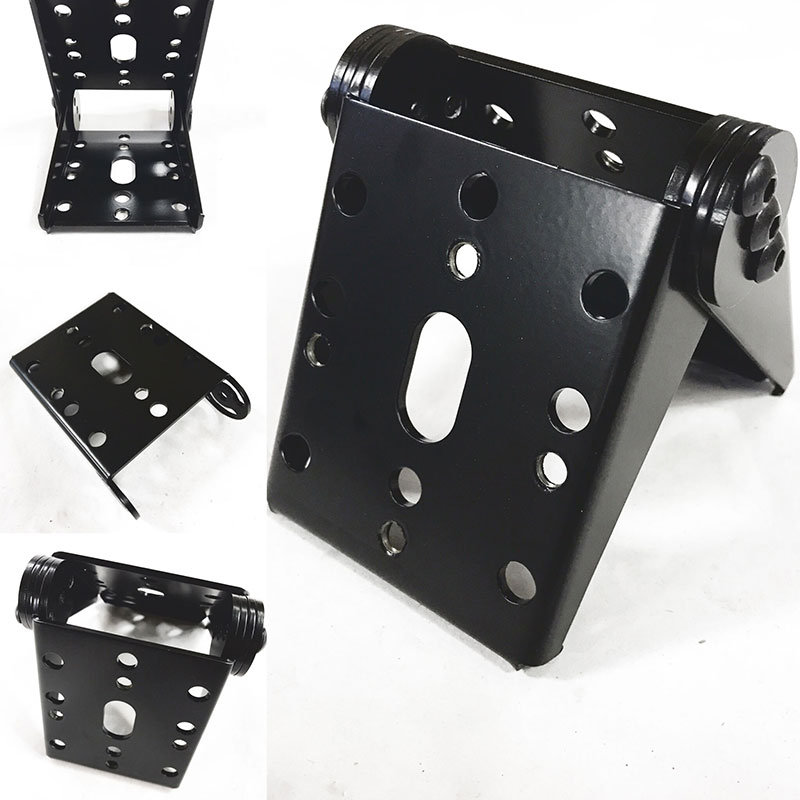Manufacturing Process of Cold Rolled Steel Sheet Metal Parts
2024-06-21
Cold rolled steel sheet metal parts are components manufactured from cold rolled steel sheets, which undergo a specific manufacturing process to achieve desired dimensions, surface finish, and mechanical properties. Cold rolled steel is commonly used in various industries due to its excellent strength, formability, and cost-effectiveness. Here’s an overview of cold rolled steel sheet metal parts, their manufacturing process, applications, and benefits:
Manufacturing Process of Cold Rolled Steel Sheet Metal Parts:
1. Material Selection:
- Cold rolled steel is chosen based on its desired mechanical properties, surface finish, and thickness required for the parts.
- Common grades include low carbon steel (e.g., AISI 1008, 1010), medium carbon steel (e.g., AISI 1045), and alloy steels depending on specific application needs.
2. Cold Rolling:
- The process starts with hot rolled steel coils that are further processed through cold rolling mills.
- Cold rolling involves passing the steel through rollers at room temperature to reduce thickness and improve surface finish.
- This process also improves the steel’s mechanical properties, such as hardness and tensile strength, by work hardening the material.
3. Cutting and Shearing:
- Cold rolled steel sheets are then cut or sheared to the required size and shape using cutting machines or shearing equipment.
- Precision cutting ensures that the parts meet dimensional tolerances and specifications.
4. Forming and Bending:
- Cold rolled steel sheets can be formed and bent into complex shapes using various forming techniques such as stamping, bending brakes, or roll forming.
- Forming processes ensure that the parts maintain their structural integrity and dimensional accuracy.
5. Surface Treatment:
- Surface finishing processes like deburring, grinding, or polishing may be applied to achieve smooth surfaces and remove any imperfections.
- Surface treatments such as painting, powder coating, or plating can be applied for corrosion resistance or aesthetic purposes.
6. Assembly and Welding (if needed):
- Cold rolled steel parts may require assembly with other components or welding processes to create larger assemblies or structures.
- Welding techniques such as spot welding or TIG welding are commonly used depending on the design requirements.
7. Quality Control and Inspection:
- Throughout the manufacturing process, quality control measures ensure that parts meet specified tolerances, dimensions, and material properties.
- Inspection techniques like dimensional checks, visual inspection, and non-destructive testing are conducted to verify part quality.
Applications of Cold Rolled Steel Sheet Metal Parts:
1. Automotive Industry:
- Used in vehicle bodies, chassis components, brackets, and structural parts due to its strength, formability, and lightweight properties.
2. Construction and Architecture:
- Structural steel components, roofing panels, HVAC ductwork, and decorative elements benefit from cold rolled steel’s durability and aesthetic appeal.
3. Industrial Equipment:
- Machinery parts, enclosures, cabinets, and tooling made from cold rolled steel for their strength and resistance to wear and tear.
4. Consumer Goods:
- Household appliances, furniture, and electronic enclosures utilize cold rolled steel for its formability, finish quality, and cost-effectiveness.
5. Infrastructure and Utilities:
- Utility poles, signage, fencing, and drainage components rely on cold rolled steel for its corrosion resistance and long-term durability.
Benefits of Cold Rolled Steel Sheet Metal Parts:
1. High Strength and Durability:
- Cold rolled steel maintains high tensile strength and hardness, suitable for demanding applications in various industries.
2. Excellent Formability:
- Cold rolling improves the steel’s formability, allowing for complex shapes and tight tolerances in parts manufacturing.
3. Smooth Surface Finish:
- Achieves a smooth and uniform surface finish ideal for applications requiring aesthetic appeal or where surface quality is critical.
4. Cost-Effective Production:
- Compared to hot rolled steel, cold rolled steel production offers cost savings through reduced material waste and improved process efficiency.
5. Versatility and Adaptability:
- Cold rolled steel parts can be customized to meet specific design requirements and production volumes, offering versatility in manufacturing.
Cold rolled steel sheet metal parts play a vital role across various industries, providing durable, cost-effective solutions for a wide range of applications. Their manufacturing process ensures consistent quality and dimensional accuracy, making them indispensable in modern manufacturing and construction practices.



